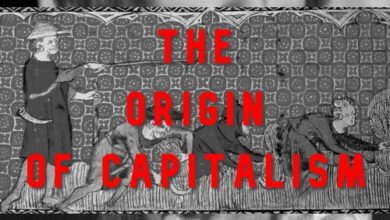March on Rome definition background development effects
March on Rome
Great mobilization of fascist militants who converged on the capital of Italy in 1922. In this article we will provide you the definition of March on Rome.
The march on Rome was a great mobilization of fascist militants who converged on the capital of the kingdom of Italy, between October 27 and 30, 1922 . This was organized by Benito Mussolini, leader of the National Fascist Party that he had founded in 1921.
The march on Rome brought Mussolini to power , as King Victor Emmanuel III, impressed by the magnitude of the mobilization, appointed him prime minister and asked him to form a government.
After taking office, Mussolini maintained the facade of the parliamentary system for 2 years. The establishment of an authoritarian regime began to become visible in 1924, after the assassination of the socialist deputy Giacomo Matteotti and the prohibition of the activities of opposition political parties.
Enhance your reading: What was the battle of Berlin/development/aftermath/context
Background to the march on Rome
The end of the First World War , in 1918, had awakened in Italy a generalized hope for the arrival of better times, which soon turned to profound disappointment.
This was because Italian aspirations to expand the national territory were thwarted by the Saint-Germain-en-Laye Peace Treaty. Although Italy received Trentino, Venice Julia and South Tyrol; Dalmatia and Istria became part of the Kingdom of Yugoslavia . Italy was also excluded from the division of the German colonies in Africa.
On the other hand, to the 670,000 dead in the Great War it was soon to be added another 400,000 caused by the Spanish flu pandemic . Bad harvests, very high inflation (825% in 1920 compared to 1913), strikes and factory takeovers, deteriorated the economic and social situation.
In this context, on March 23, 1919, Benito Mussolini created the “Fasci italiani di combattimento” (Italian League of Combatants), making an ideological shift that took him from initial socialism to extreme nationalism .
Despite their small numbers, the fascist militants, called “black shirts”, violently attacked the headquarters of left-wing parties and newspapers and union premises. In addition, they faced street fights with striking workers, peasants who were protesting, and anyone they considered a socialist or communist.
Mussolini‘s promises to restore order and discipline were seen by many businessmen and the middle classes as the only possible means to appease the growing wave of social conflict that the government was unable to stem.
In 1921, Mussolini transformed his group into a political party by founding the National Fascist Party (PNF), which won 35 seats in the Italian Parliament in the legislative elections of that year.
This advance of the fascists worried the liberal government of Prime Minister Luigi Facta, who sought the support of Gabriele D’Annunzio to overshadow the figure of Mussolini. Facta’s idea was for the ultra-nationalist poet to lead a patriotic demonstration on November 4, 1922, the anniversary of the Italian triumph in the First World War.
Enhance your reading: Consequences of the Yalta conference/development/Meaning
Development of the march on Rome
Determined not to be overshadowed by D’Annunzio, in October 1922 Mussolini decided to organize a coup d’état that would allow him to take control of power .
In a few days, thousands of fascists took to the streets of the main cities of northern Italy, forcing the resignation of almost all the socialist authorities .
On October 22, Mussolini ordered a march on Rome. Armed with pistols, maces and knives, and mobilizing in cars, trucks or on foot, thousands of fascists began to converge on the capital, threatening to provoke a civil war if the police blocked their way.
Alarmed by the situation, Fasca asked the king to proclaim a state of siege and to repress the fascists, but the monarch refused to do so.
Impressed by the magnitude of the demonstrations and aware of the passivity of the police and the army, on October 29 the king offered Mussolini the position of prime minister and asked him to form a government.
The fascist leader, who was in Milan, boarded a train and headed for Rome. The next day, Mussolini installed his government as around 30,000 black shirts marched in triumph through the streets of the city.
Effects
The main consequences of the march on Rome were the following:
- Mussolini formed a government and assumed the position of prime minister . Thus, in just 3 years the fascists went from being a marginal group to becoming a mass movement capable of putting a faltering government in check, contesting the monopoly of force and finally taking control of power.
- Luigi Fasca and the members of his cabinet had to resign and were forever marginalized from political life.
- Gabriele D’Annunzio secluded himself on a rural property and devoted himself to writing. Although his preaching influenced the shaping of Mussolini‘s ideology, he did not hold any position in the fascist government. Upon his death in 1938, Mussolini organized large state funerals in his honor.
- The fate of King Victor Emmanuel III was inextricably tied to Mussolini. The king witnessed the way in which the Duce used the power he had given him to destroy the liberal state and establish a totalitarian regime .
- Formally, the fascist dictatorship began in the months that followed the march on Rome. Resorting to threats and violence, the fascists secured dominance over all political power. By 1924, it came under the absolute control of Mussolini , who became the undisputed and infallible leader of the Italian people.
